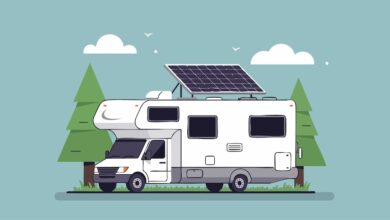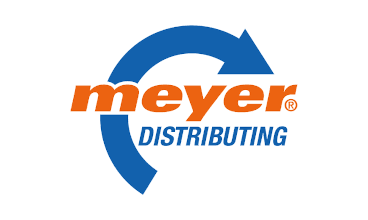There are endless ways to customize the setup in a trailer to ensure it will perform how your customers want it to, as well as support the additional electrical accessories they may want to run.
This is where a dual or auxiliary battery system can provide extra capacity for running items, such as fridges, lights, and tools, in a trailer and ensure the vehicle will still start when they are ready to move on.
What is a Dual Battery System?
A dual battery system allows you to reliably run electrical equipment in a trailer once the vehicle is shut down and ensure that the vehicle can still be started again afterwards. This allows for the secondary battery to run electrical equipment and accessories and ensure the standard battery is used for its intended purpose: starting the vehicle.
Essentially, any devices you intend to run only while the engine is running should be connected to the start battery, and anything you want to keep running when the engine is not should be connected to the secondary battery.
DC-DC Battery Charger
One of the most common ways to set-up a dual battery system is by using a DC-DC battery charger. Generally, a DC-DC battery charger is going to offer more flexibility for a dual battery set-up, not only in terms of correct charging for the specific battery installed, but also suitability for different alternator types, installation location, and amp size. Some even accept additional power sources such as solar.
Finding the correct size dual battery charger
Dual Battery Chargers typically range from 6 – 40 amps. So, which one is right for your customers?
Commonly, AC chargers and smaller 6 – 10 amp DC-DC chargers are used to ‘trickle’ charge batteries, however a higher amp sized charger will allow you to replenish a charge in THE secondary battery quicker to power your hungry electrical loads.
At most, trailer plugs (between the tow vehicle and trailer) will allow you to feed 10 amps through to a battery charger located in a trailer. The wires going through these trailer plugs are too small to feed the power required for a 25- or 40-amp charger. As a result, it is necessary to run a separate power line from the tow vehicle to the trailer. A simple 50 amp rated Anderson Power plug is best used to make this connection repeatedly.
Also, as a general rule, secondary battery bank sizes of 75-200AH require a 25-amp dual battery charger and then for higher capacity needs, a 40-amp dual battery charger is recommended. Why is this important?
Excessive current flow into a battery has a range of impacts but the worst impact is the degradation of battery service life and capacity. It is imperative to work out the accessories that are being powered for the trailer, then workout the battery capacity required and then select the right sized dual battery charger.
A word on solar
Some DC-DC chargers can also accept solar as a charging method for second battery. This provides less load on the vehicle’s alternator and comes in handy if a customer plans to stay in one location for an extended period of time.
The BCDC Dual Input range from REDARC for example, can charge batteries from and the vehicle’s alternator simultaneously. It works with all alternator types including smart alternators and works with a range of battery types including lithium iron phosphate batteries.
To ensure your customers get the expected performance and value for money from their trailer batteries, make sure you refer to the battery manufacturers’ data sheet and check out our dual battery calculator to select the battery charging solution to make sure they stay in charge.
For more information visit redarcelectronics.com



